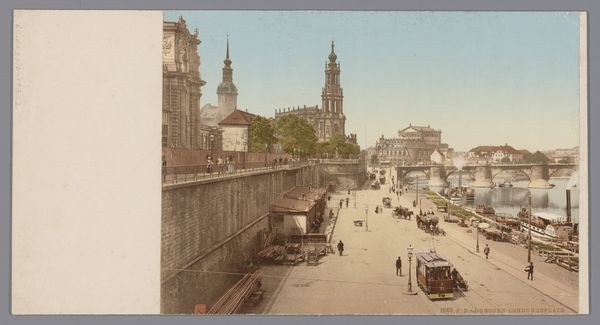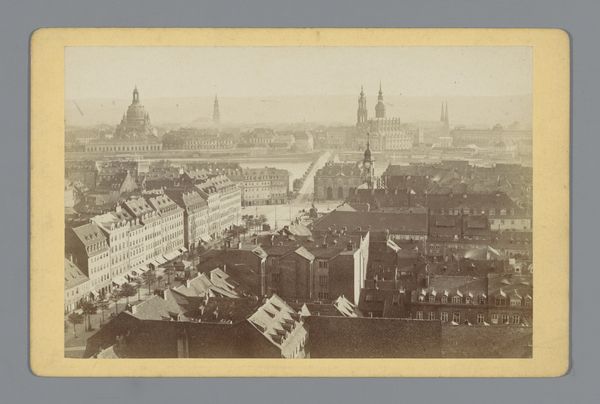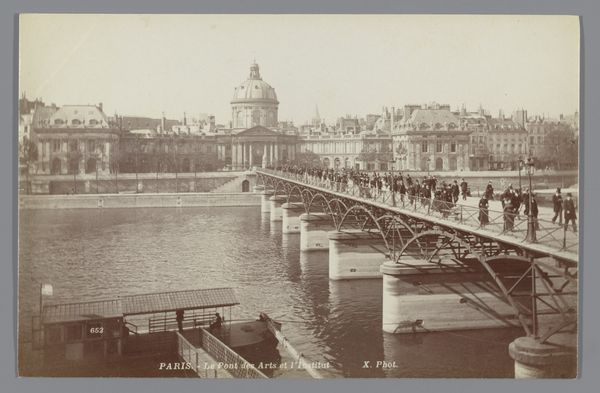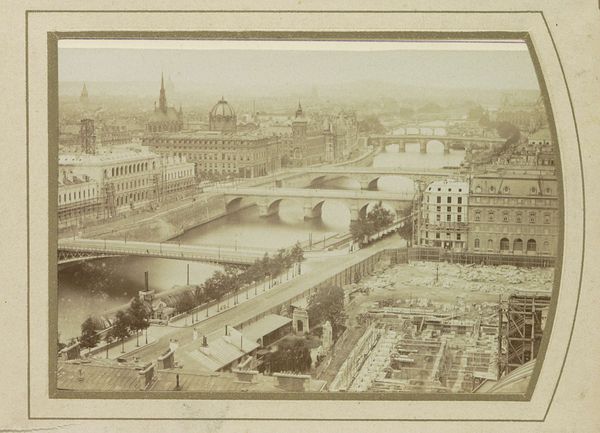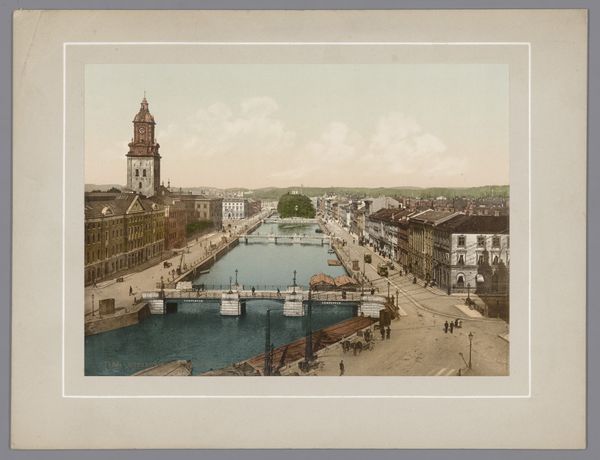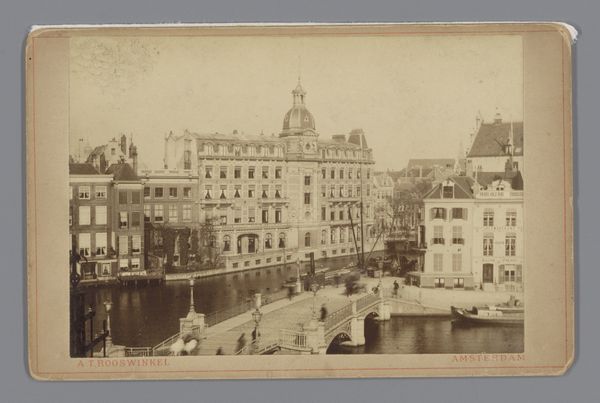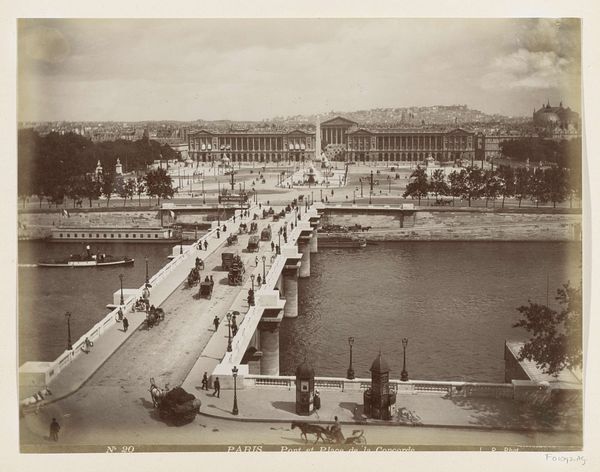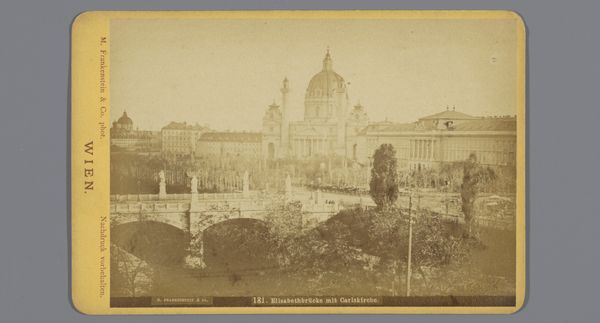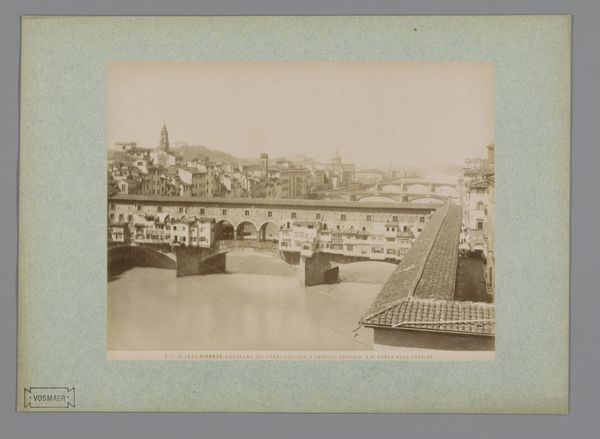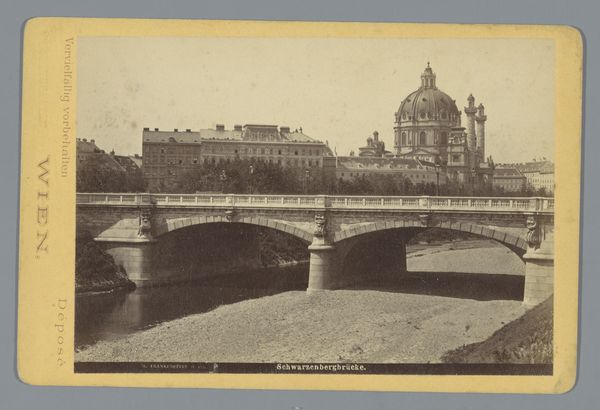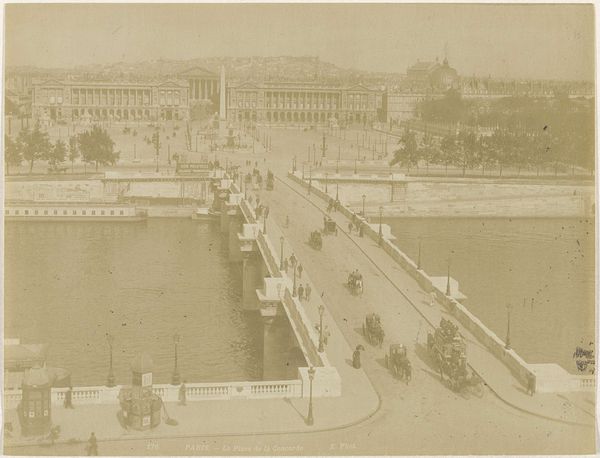
print, photography
#
pictorialism
# print
#
landscape
#
photography
#
cityscape
#
watercolor
Dimensions: height 161 mm, width 308 mm
Copyright: Rijks Museum: Open Domain
Curator: Looking at this print, I'm struck by how monumental and detailed it is, especially considering it depicts an urban landscape. The craftsmanship certainly commands attention. Editor: This is titled "Gezicht op Dresden," an anonymous print dating roughly from 1889 to 1920, and it’s currently held at the Rijksmuseum. Immediately I notice the delicate balance between architectural grandeur and everyday human activity crossing the bridge. Curator: Indeed. The strategic use of pictorialism emphasizes softness and evokes a dreamlike aesthetic, lending an aura of timelessness to the urban scene. The very conscious layering of tones directs my eye towards those commanding architectural landmarks along the Elbe River. Editor: Absolutely, and the use of photography to capture that level of detail… it forces us to confront the materials: the photographic chemicals, the paper, and the hands that carefully manipulated them to achieve this atmospheric quality. Consider the laborers involved in creating this idealized view – and contrast their conditions with the city’s bourgeois life depicted on the surface. Curator: A critical lens, and certainly a valid interpretation. For me, however, the charm rests in its composition – the masterful arrangement of forms and light that captures the very essence of Dresden, and transports us to this moment of aesthetic contemplation, one that feels utterly removed from labor disputes. The image exudes the sublime, offering a refuge from the anxieties of modernity. Editor: But aren’t the "anxieties of modernity" inseparable from this cityscape? It’s through their physical toil and material engagement that urban centers like Dresden even came to be in the first place! Even a romantic view is created, developed, and consumed within a broader material network of making and seeing. Curator: You encourage us to dig a little deeper. Well, irrespective of its creation and cultural framework, one must still observe that "Gezicht op Dresden" provides a unique insight into the pictorialist movement’s desire to raise photography to the status of fine art. Editor: And perhaps an invitation to also acknowledge that art always reflects labor and material conditions, be that intentionally or otherwise.
Comments
No comments
Be the first to comment and join the conversation on the ultimate creative platform.

